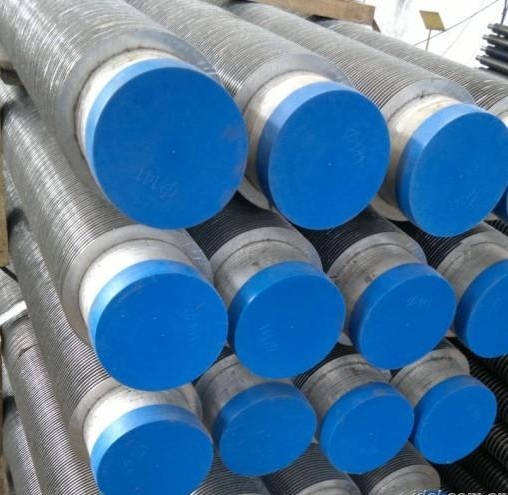What materials are commonly used in finned tubes?
Finned Tube Materials
Finned tubes are critical components in heat exchange systems across various industries, designed to enhance heat transfer efficiency by increasing the surface area for thermal exchange. The selection of appropriate finned tube materials significantly impacts performance, durability, and application suitability. This comprehensive guide examines the most common finned tube materials, their technical specifications, performance characteristics, and optimal applications.
1. Steel Finned Tubes
Steel finned tubes are widely used in industrial applications due to their excellent mechanical properties and cost-effectiveness. These tubes offer a balance between strength, thermal conductivity, and manufacturing flexibility.
Technical Specifications
- Thermal Conductivity: 45-65 W/m·K
- Maximum Service Temperature: 450°C
- Tensile Strength: 400-550 MPa
- Corrosion Resistance: Moderate
- Pressure Rating: Up to 30 MPa
Common Applications
- Industrial boilers
- Power generation systems
- Heat recovery units
- Process heating equipment
Performance Note: Steel finned tubes are susceptible to oxidation and corrosion in oxygen-rich environments. Proper water maintenance during heating cycles is essential to prevent corrosion-related failures. Open boiler systems with high oxygen content require careful consideration before selecting steel finned tubes.
2. Copper Finned Tubes
Copper finned tubes are renowned for their exceptional thermal conductivity and corrosion resistance, making them ideal for applications requiring efficient heat transfer and long service life.
Technical Specifications
- Thermal Conductivity: 385-400 W/m·K
- Maximum Service Temperature: 200°C
- Tensile Strength: 200-250 MPa
- Corrosion Resistance: Excellent
- Pressure Rating: Up to 15 MPa
Common Applications
- HVAC systems
- Refrigeration units
- Automotive radiators
- Electronic cooling systems

3. Aluminum Finned Tubes
Aluminum finned tubes offer an excellent balance between thermal performance, weight considerations, and cost, making them suitable for various heat exchange applications.
Technical Specifications
- Thermal Conductivity: 200-240 W/m·K
- Maximum Service Temperature: 150°C
- Tensile Strength: 70-150 MPa
- Corrosion Resistance: Good (except alkaline environments)
- Pressure Rating: Up to 10 MPa
Common Applications
- Air conditioning systems
- Automotive heat exchangers
- Electronic enclosures
- Low-temperature process heating
Limitation Note: Aluminum finned tubes are susceptible to corrosion in alkaline environments. Proper internal corrosion protection measures are essential for long-term performance. Current market usage of aluminum finned tubes has decreased due to the availability of more durable alternatives.
4. Copper-Aluminum Composite Finned Tubes
Copper-aluminum composite finned tubes combine the advantages of both materials, offering optimized performance characteristics for demanding applications.
Technical Specifications
- Thermal Conductivity: 200-300 W/m·K
- Maximum Service Temperature: 180°C
- Tensile Strength: 150-300 MPa
- Corrosion Resistance: Excellent (copper component)
- Pressure Rating: Up to 25 MPa
Common Applications
- High-efficiency HVAC systems
- Industrial heat recovery
- Power plant heat exchangers
- Chemical processing equipment
Design Advantage: The copper-aluminum composite design allows for separate optimization of the ventilation component (copper) and heat dissipation component (aluminum). This configuration provides long-term corrosion resistance from copper while benefiting from aluminums lightweight properties and excellent heat conduction.
Comparative Analysis of Finned Tube Materials
| Material Property | Steel | Copper | Aluminum | Copper-Aluminum Composite |
|---|---|---|---|---|
| Thermal Conductivity (W/m·K) | 45-65 | 385-400 | 200-240 | 200-300 |
| Corrosion Resistance | Moderate | Excellent | Good (except alkaline) | Excellent |
| Maximum Temperature (°C) | 450 | 200 | 150 | 180 |
| Pressure Rating (MPa) | Up to 30 | Up to 15 | Up to 10 | Up to 25 |
| Relative Cost | Low | High | Low-Medium | Medium-High |
| Weight | Medium | High | Low | Low-Medium |
| Manufacturing Flexibility | High | Medium | High | Medium |
Industry Applications of Finned Tube Materials
Power Generation
Steel and copper-aluminum composite tubes in boilers and heat recovery systems
HVAC & Refrigeration
Copper and aluminum tubes in air conditioning and cooling systems
Automotive
Aluminum and copper tubes in radiators and charge air coolers
Chemical Processing
Specialized steel and composite tubes in reactors and heat exchangers
Selection for Finned Tube Materials
When selecting finned tube materials, consider the specific application requirements, environmental conditions, and performance expectations. Steel finned tubes offer excellent mechanical strength for high-pressure applications, while copper provides superior thermal conductivity where heat transfer efficiency is critical. Aluminum offers a lightweight, cost-effective solution for less demanding environments, and copper-aluminum composites deliver optimized performance combining the benefits of both materials.
Current market trends show strong preference for steel and copper-aluminum composite finned tubes due to their balanced performance characteristics, durability, and ability to meet diverse application requirements while enhancing system aesthetics and efficiency.

